Some of the links below are affiliate links. This means that, at zero cost to you, I will earn an affiliate commission if you click through the link and finalize a purchase.
Craving Chipotle’s fajita veggies but stuck at home? Look no further! I’ve cracked the code with a near perfect clone of Chipotle’s fajita vegetables, perfected after over a dozen trials. This foolproof guide ensures you get that authentic sizzle and flavor, right in your own kitchen. Trust me, these veggies are the real deal – you won’t believe you made them yourself!
Wondering what to pair these with? I’ve got you! The obvious choice is going to be chicken or veggie fajitas, but we like to serve these as taco filling, on top of a burrito bowl, and even inside quesadillas!
Why You’ll Love These Fajita Vegetables
- Flavor Explosion: Fajita veggies are like a flavor bomb in your mouth. The mix of bell peppers, onions, and sometimes other veggies like mushrooms or zucchini creates a symphony of tastes that complements the spices of the meat perfectly.
- Texture Game Strong: They add a delightful crunch and texture to your fajitas, balancing out the tender meat or beans. It’s all about that satisfying bite!
- Color Pop: Ever heard the phrase “you eat with your eyes first”? Well, these veggies make your fajitas a feast for the eyes too, with their vibrant colors adding visual appeal to your plate and Instagram feed.
This girl is slightly obsessed with Chipotle, but not so much with their high prices. I’ve made it my mission to start recreating all of my favorites from their restaurant- starting with this easy recipe for fajita veggies. They are a great addition to almost any Mexican inspired dish but also can be served on their own as vegetarian fajitas for a quick weeknight dinner.
If you’ve never had them before you are in for a real treat. The star players, bell peppers and onions, are expertly grilled to crisp-tender perfection with just a sprinkle of seasoning. It’s a simple, yet unforgettable, dish that keeps you coming back for more.

Ingredients You’ll Need
This is a super simple recipe, even for a side dish, so you won’t really need much to get started. Let’s break this down and talk about a few variations that are also incredibly tasty.
- Oil: A top pick for high-heat cooking, which is what we’re doing here, is avocado oil. It’s got a neutral taste and can really take the heat without smoking up your kitchen.
- Bell Pepper: Chipotle uses green bell peppers in this recipe. You can opt for any color if you’d like, but green adds a sweet, mildly, tangy taste that is not too overwhelming.
- Red Onion: This creates a milder flavor compared to a white or yellow onion which ensures it doesn’t overpower the dish but still adds a great flavor.
- Seasonings: Keep it simple with salt, pepper, and oregano or you can check out my variations below for more flavor ideas.
Other Vegetable Options
When choosing veggies for fajitas, you want a mix that brings both flavor and texture to the table. Here’s the winning lineup:
- Bell Peppers: The MVP of fajita veggies. Mix colors for a vibrant and sweet flavor.
- Onions: A must-have for that classic fajita zing. White or red onions both work great.
- Mushrooms: Optional, but they add a nice, meaty texture.
- Zucchini: A great addition if you’re after a bit of variety and a slight crunch.
- Yellow Squash: Similar to zucchini, it adds color and a tender texture.
- Cherry Tomatoes: Not traditional, but they can add a pop of juiciness.
Remember, the key is to slice them uniformly for even cooking and get that perfect tender-crisp finish.
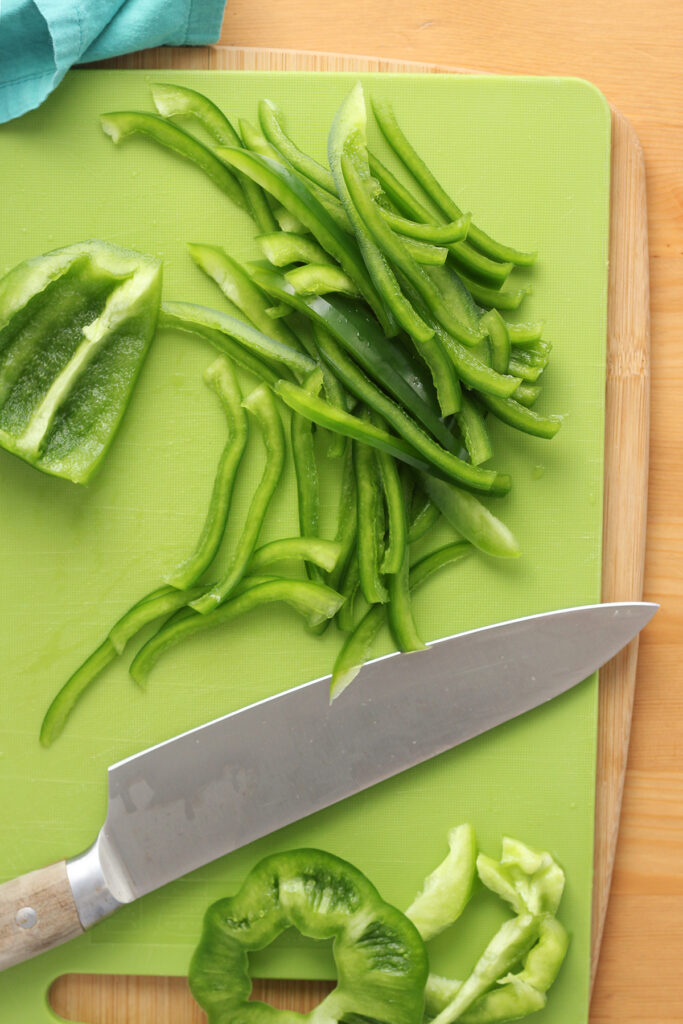
How To Make Chipotle Veggies
- Prep Your Veggies: Start by slicing the green peppers and red onion into thin strips. Aim for uniformity in size for even cooking. Toss the vegetables with the oil until coated.
- Heat the Pan: In a large skillet, heat the oil over medium heat. You want the pan hot enough to sizzle the veggies, but not so hot that the oil smokes.
- Sauté the Veggies: Add the sliced peppers and onions to the pan. Sauté them, stirring occasionally, until they’re tender but still have a bit of crunch. This usually takes about 5-7 minutes.
- Season: Sprinkle the oregano, salt, and a dash of pepper over the veggies. Mix well to evenly distribute the seasoning.
- Check for Doneness: The veggies should be slightly softened, with a vibrant color and a bit of char. Taste and adjust seasoning if necessary.
- Serve: Remove from heat and serve hot.
Recipe Variations
Spicing up your Chipotle-style fajita veggies can be a fun and delicious experiment! Here are some variations to try:
- Different Spice Blends: Play around with seasonings. Think smoked paprika, a hint of lime zest, or a dash of chipotle powder for extra smokiness.
- Add Some Heat: If you like it spicy, throw in some diced jalapeños or a sprinkle of red chili flakes.
- Splash of Citrus: A squeeze of fresh lime juice right after cooking adds a zesty freshness.
- Herb It Up: Fresh cilantro or a bit of dried oregano can introduce a new flavor dimension.
- Marinated Magic: Marinate your veggies in a blend of olive oil, garlic, and your favorite herbs before cooking.
- Roasted Route: Instead of sautéing, try roasting your veggies in the oven for a deeper flavor.
- Veggie Variations: Experiment with different vegetables like sweet potatoes, asparagus, or colored carrots for a twist.
- Saucy Addition: Drizzle with a homemade or store-bought sauce like chipotle mayo or avocado crema for extra yum.
Each tweak brings a whole new flavor profile, so feel free to mix and match to find your perfect fajita veggie variation!
Storage and Reheating
Proper storage and reheating are key to enjoying your fajita veggies even after the initial meal. Here’s how to do it:
- Storage: Allow the cooked fajita veggies to cool to room temperature. Don’t leave them out for more than two hours to avoid bacterial growth. Transfer the veggies to an airtight container. Store the container in the refrigerator. Properly stored, your fajita veggies can last 3-4 days.
There are two preferred methods for reheating.
- In a Skillet (Preferred Method): Reheat the veggies in a skillet over medium heat. Stir occasionally until they are heated through. This method helps to maintain their texture.
- In the Microwave: If you’re in a hurry, you can use the microwave. Place the veggies in a microwave-safe dish, cover them with a microwave-safe lid or a damp paper towel to keep moisture in, and heat on high for about 1-2 minutes, or until hot. Stir halfway through to ensure even heating.
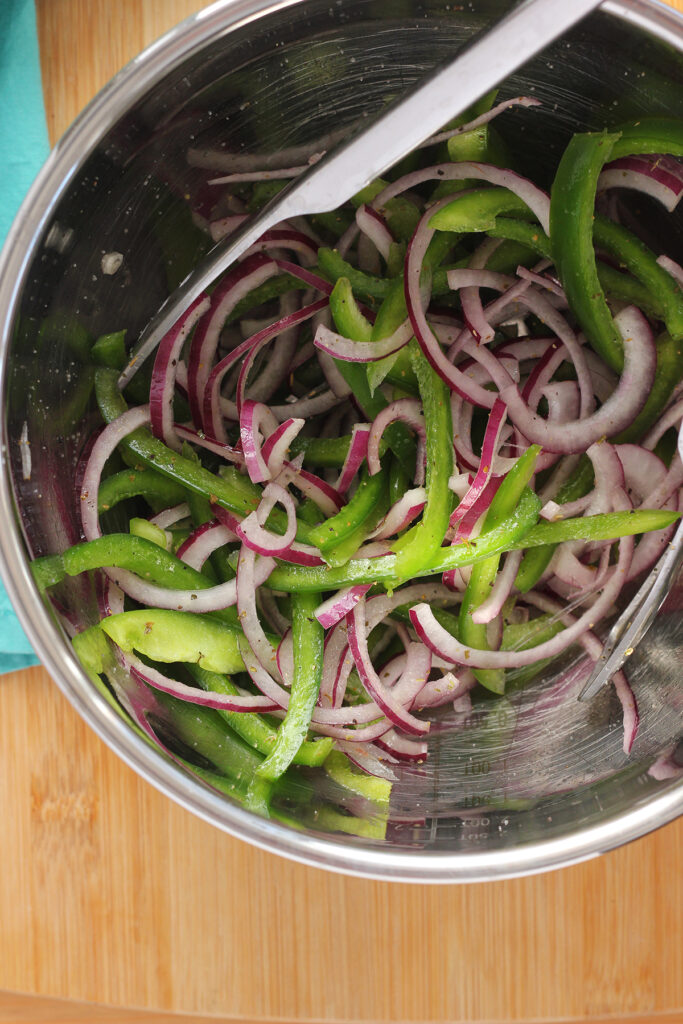
Other Cooking Techniques:
- Sautéing: This is the classic method for fajita veggies. Heat oil in a large skillet over medium-high heat, then add your sliced veggies. Cook them, stirring occasionally, until they’re tender but still have a bit of a bite. This method brings out their natural sweetness and gives them a nice char.
- Grilling: For a smokier flavor, grill the veggies. Brush sliced veggies with oil and place them on a hot grill. Cook until they have grill marks and are tender. This method adds a delightful smoky flavor reminiscent of outdoor cooking.
- Oven Roasting: Toss the veggies in oil and your seasoning, then spread them out on a baking sheet. Roast in a preheated oven at around 425°F (220°C) until they’re caramelized and tender. This method brings out a deep, sweet flavor in the veggies.
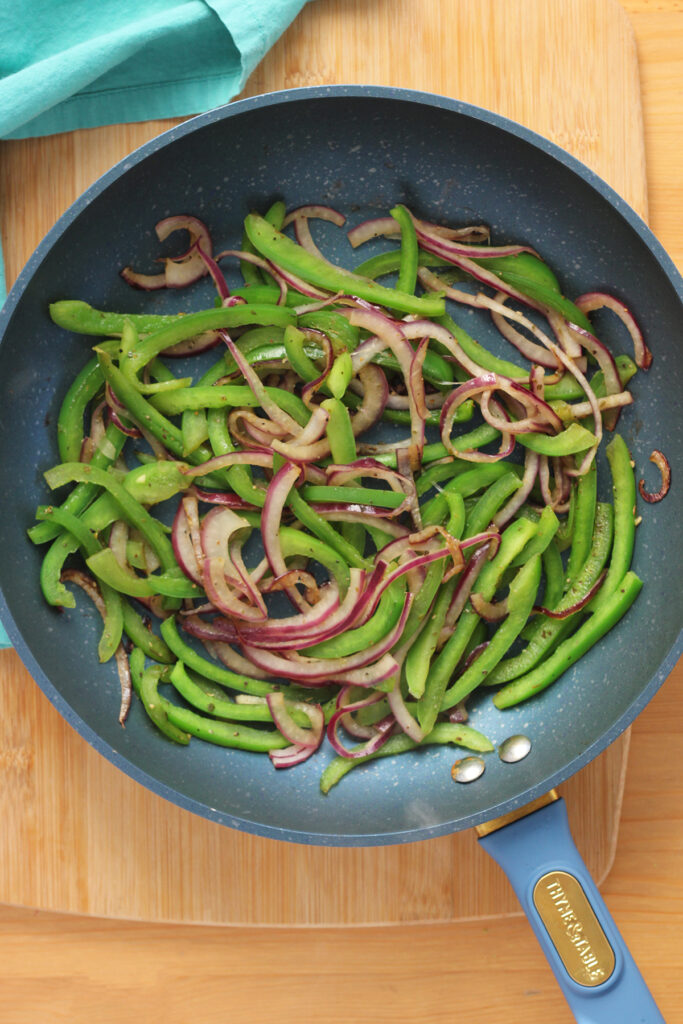
What types of bell peppers are best for this recipe?
Any color of bell peppers works, but a mix of green, red, and yellow peppers adds a nice variety of flavors and colors.
Can I use a different type of oil instead of the recommended ones?
Yes, you can use any high-heat oil like sunflower or grapeseed oil. Just avoid oils with low smoke points or strong flavors, like extra virgin olive oil.
How thin should I slice the vegetables?
Aim for uniform, thin slices, about 1/4-inch thick. This ensures they cook evenly and get a bit of char without becoming too soft.
Can I add other spices besides oregano?
Absolutely! Feel free to add cumin, chili powder, or garlic powder for extra flavor.
How do I know when the vegetables are done cooking?
The veggies are done when they’re tender but still have a slight crunch. Look for a bit of char on the edges for that perfect fajita flavor.
Can I make these veggies ahead of time?
Yes, you can cook them ahead and reheat them. Just be aware that reheating may soften them further.
Still Hungry? Follow One Sweet Appetite on Instagram, Pinterest, and Facebook!
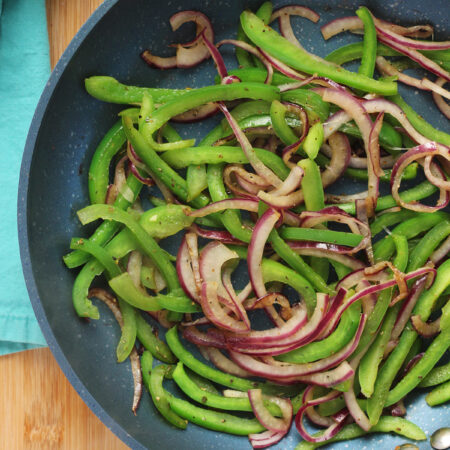
Copycat Chipotle Fajita Veggies
Prep Time 10 minutes Cook Time 5 minutes
I’ve cracked the code with a near perfect clone of Chipotle’s fajita vegetables, perfected after over a dozen trials. This foolproof guide ensures you get that authentic sizzle and flavor, right in your own kitchen.
Cook ModePrevent your screen from going dark
]]>
Instructions
-
Start by slicing the green peppers and red onion into thin strips. Aim for uniformity in size for even cooking.
-
Toss the vegetables with the oil until coated.
-
Heat a large skillet over medium heat. You want the pan hot enough to sizzle the veggies, but not so hot that the oil smokes.
-
Add the sliced peppers and onions to the pan. Sauté them, stirring occasionally, until they’re tender but still have a bit of crunch. This usually takes about 5-7 minutes.
-
Sprinkle the oregano, salt, and a dash of pepper over the veggies. Mix well to evenly distribute the seasoning.
-
The veggies should be slightly softened, with a vibrant color and a bit of char. Taste and adjust seasoning if necessary.
-
Remove from heat and serve hot.
Notes
- Different Spice Blends: Play around with seasonings. Think smoked paprika, a hint of lime zest, or a dash of chipotle powder for extra smokiness.
- Add Some Heat: If you like it spicy, throw in some diced jalapeños or a sprinkle of red chili flakes.
- Splash of Citrus: A squeeze of fresh lime juice right after cooking adds a zesty freshness.
- Herb It Up: Fresh cilantro can introduce a new flavor dimension.
- Marinated Magic: Marinate your veggies in a blend of olive oil, garlic, and your favorite herbs before cooking.
- Veggie Variations: Experiment with different vegetables like sweet potatoes, asparagus, or colored carrots for a twist.
- Saucy Addition: Drizzle with a homemade or store-bought sauce like chipotle mayo or avocado crema for extra yum.
Nutrition
Calories: 90kcal | Carbohydrates: 7g | Protein: 1g | Fat: 7g | Saturated Fat: 1g | Polyunsaturated Fat: 1g | Monounsaturated Fat: 5g | Sodium: 294mg | Potassium: 187mg | Fiber: 2g | Sugar: 3g | Vitamin A: 308IU | Vitamin C: 68mg | Calcium: 19mg | Iron: 0.4mg
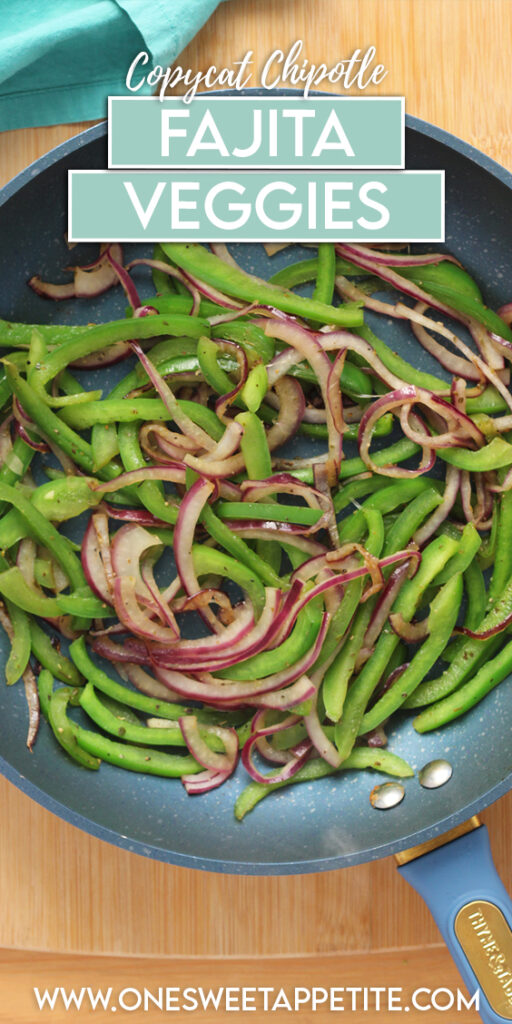

« Previous
Reader Interactions
Find even more recipes!
Be sure to share it in the comments below and follow me on Pinterest, Facebook and Instagram for even more delicious recipes.
